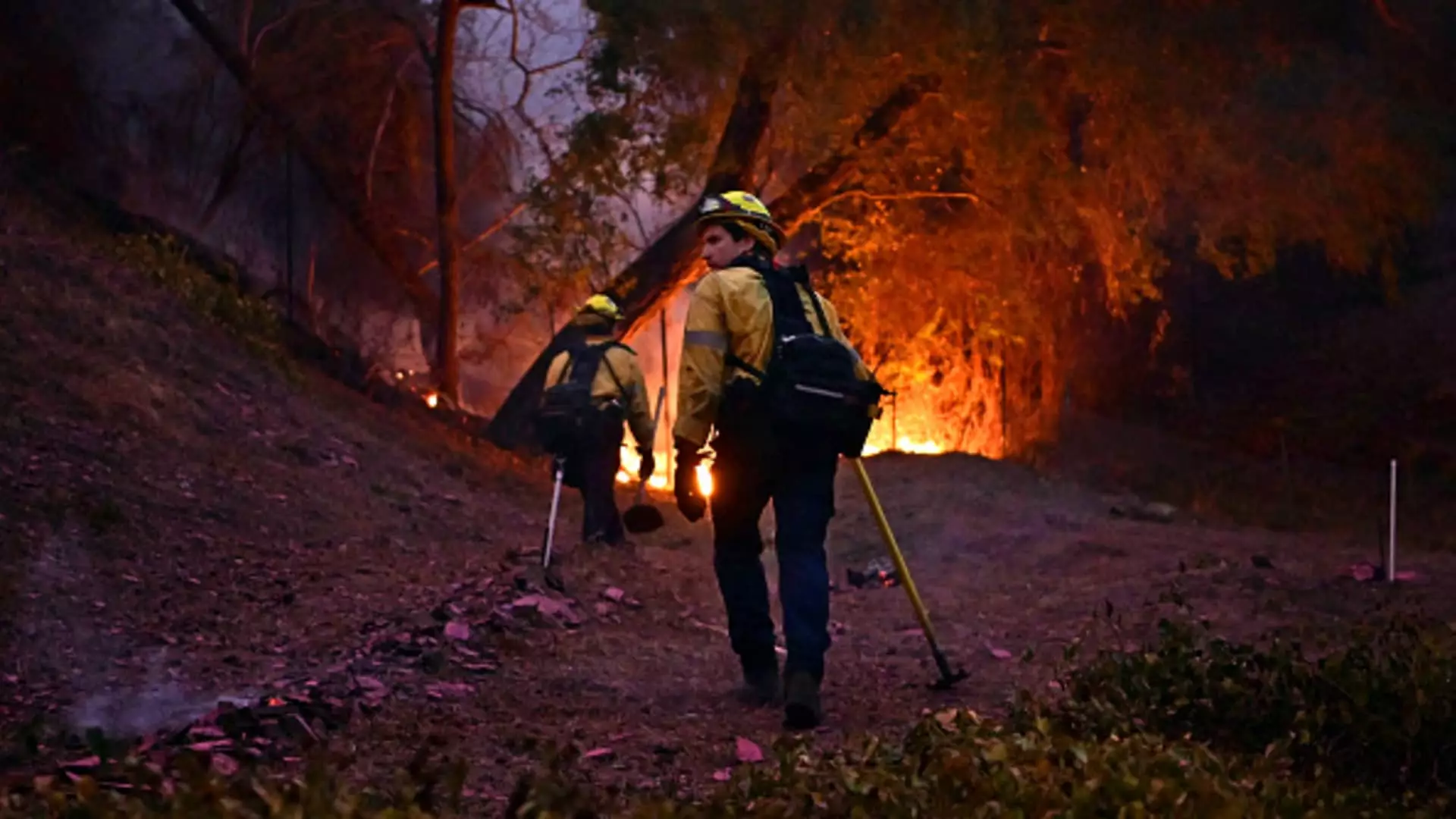In what has become a dire situation for residents of Los Angeles County, a shocking increase in the death toll linked to rampant wildfires has been confirmed, now standing at 16. Originally identified as 11 fatalities, the recent determinations by the county medical examiner’s office reveal a heartbreaking reality: five lives lost due to the Palisades Fire and eleven due to the ongoing Eaton Fire, with further discoveries expected as search operations continue. Investigations are ongoing, adding to the tension as emergency responders comb through once-familiar neighborhoods reduced to ashes.
Firefighters are engaged in a relentless battle against the advancing flames, particularly in Mandeville Canyon, a region notorious not only for its natural beauty but also for its celebrity residents, including notable figures like Arnold Schwarzenegger. As they deploy helicopters to dump water on the raging infernos, the fire’s ominous trajectory threatens landmarks such as the renowned J. Paul Getty Museum and the University of California, Los Angeles (UCLA). The psychological strain on residents is palpable; evacuation warnings have spurred further anxiety among those already on high alert.
As night fell, Los Angeles County Supervisor Lindsey Horvath spoke to the public about the ongoing heartbreak faced by Angelenos amid these trying times. The fires have escalated dramatically, with the looming threat of powerful Santa Ana winds—a notorious force often exacerbating wildfire conditions. The implications of this wind cannot be understated, as previous patterns have shown that it often fuels the flames, driving them into heavily populated areas like the Hollywood Hills and the San Fernando Valley.
The grim task of finding the missing continues, supported by cadaver dogs and meticulous grid searches. Law enforcement officials, including Sheriff Robert Luna, have established a family assistance center in Pasadena, urging residents to comply with curfews meant to protect both the community and emergency responders. Amidst the chaos, the reality remains that these wildfires have devastated over 56 square miles—an area exceeding the size of San Francisco—and destroyed in excess of 12,000 structures, throwing tens of thousands of lives into uncertainty.
Despite the overwhelming losses, the altruism displayed by community members has been inspiring. Numerous volunteers flocked to donation centers, offering clothing, blankets, food, and other necessities to those affected by the fires. However, the influx of good intentions met logistical challenges, with some centers having to turn away potential donors due to excessive crowds. At local donation hubs, such as YMCA and Santa Anita Park, families stricken by loss sift through donations, desperately searching for items able to provide them with a semblance of stability.
Personal stories of loss resonate through the community. One resident, Jose Luis Godinez, expressed his heartbreak over the destruction of three family homes housing several relatives. “Everything is gone,” he lamented. Despite well-meaning attempts to salvage keepsakes from the rubble, residents are cautioned against entering hazardous areas where toxic substances may linger, potentially jeopardizing their health.
Systemic Shortcomings and Political Fallout
As firefighting efforts transpire, political discourse has emerged surrounding accountability for the severity of the crisis. Investigations are underway to determine deficiencies in local emergency preparedness, including why a vast reservoir was out of service when it was so desperately needed. Fire Chief Kristin Crowley’s remarks highlight a significant lack of resources allocated to her department, pointing to inadequate water supply potentially hindering firefighting capabilities.
Mayor Karen Bass faces unprecedented challenges as Los Angeles navigates an ecological crisis unmatched in recent history. The wildfires have sparked discussions around systemic failures in capacity and funding, emphasizing the need for more robust emergency preparedness plans.
The devastation wrought by the California wildfires serves as both a cautionary tale and an opportunity for resilience. The heartbreaking losses, ongoing battles against nature’s fury, and the community’s remarkably supportive spirit all intertwine to depict the complexity of this crisis. Although the fires have wreaked havoc and cost lives, the unity and strength displayed by individuals in the face of adversity suggest that recovery is possible, provided that lessons are learned and systemic issues are addressed. The resolve of those affected, together with proactive governance, will ultimately shape the community’s path forward following this unprecedented disaster.

